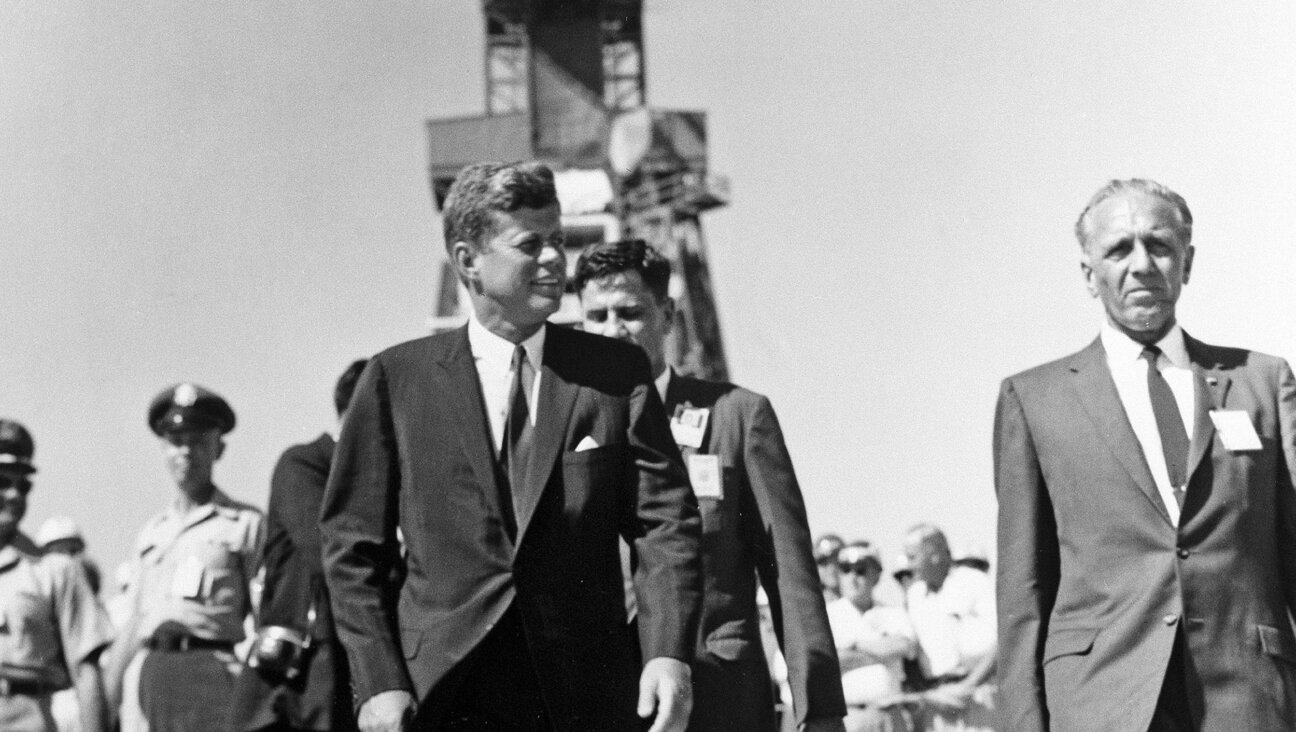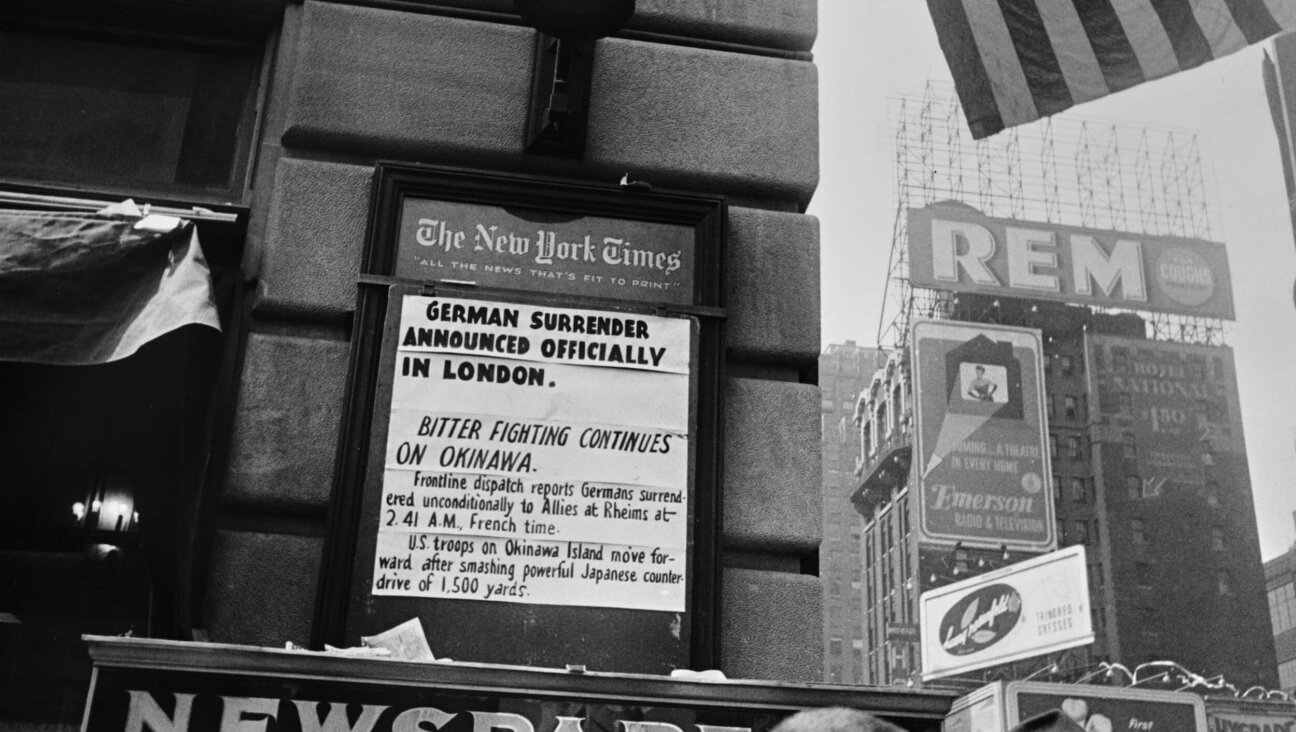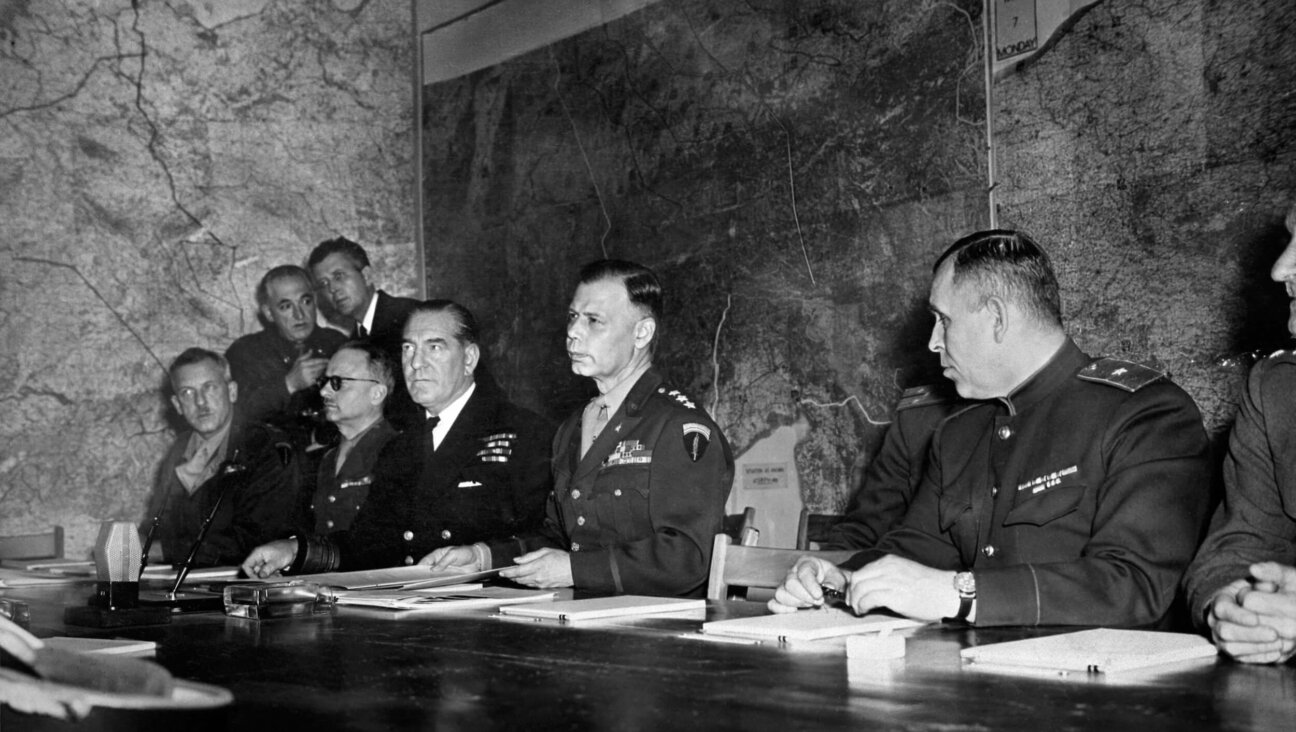A Mandate To Rescue Evidence of the Shoah
Edwin Black’s August 4 opinion article puts him seemingly at odds with the world’s leading Holocaust scholars, most of whom have taken advantage of the United States Holocaust Memorial Museum’s research center and its open access research policy (“History Demands an Uncompromised Home for Shoah Archive”).
It would go without saying, were it not for Black’s opinion article, that the museum’s acclaimed international standing rests on its historical integrity and scholarly rigor. This applies to all of our work, from exhibitions and educational programs to our collections.
This also applies to our Center for Advanced Holocaust Studies, which we established in 1998 to ensure the long-term vitality of this relatively new field. The center has quickly become one of the world’s leading institutions of Holocaust scholarship. More than 250 scholars from the United States and from 24 other countries have held fellowships at the center, including renowned scholars Christopher Browning, Vicki Caron, Peter Hayes, Hans Mommsen, Renee Poznanski, Richard Breitman and Gotz Aly. Their work has led to a variety of important new books, covering topics ranging from forced labor to the theft of Jewish property, from the origins of the Final Solution to the role of the churches.
Additionally, the Center for Advanced Holocaust Studies sponsors several seminars for professors at universities and colleges throughout the nation in order to improve the teaching of Holocaust history and to support it in a variety of disciplines beyond history, including sociology, religion, literature, philosophy and economics. We also conduct programs for teachers at Historically Black Colleges and Universities, as well as at institutions of higher education that have predominantly Hispanic populations.
Scholars the world over seek the competitive fellowships offered by our center in order to engage in lively debate and discourse with other academics and to mine the extensive holdings in the museum’s archives, now comprising some 40 million pages from 40 countries. They cover the range of the Holocaust experience: individual letters, diaries and papers; documents of various governmental agencies that carried out the Final Solution, and the records of Jewish communities as they struggled to respond and survive.
Our archives have been used not only for historical research but also to assist survivors seeking to document compensation claims, to help countries like Romania and Hungary confront their past, and as a resource for many books, films and articles — and in all cases, access is free and unfettered.
The future of Holocaust studies depends on the museum’s ability to build, preserve and make accessible the most comprehensive documentation possible. Hence, one of our highest priorities is rescuing the evidence of the Holocaust — aggressively acquiring as much material as we can during this limited window of opportunity. We are engaged in an urgent race against time, as the eyewitness generation diminishes and the materials naturally deteriorate. With antisemitism and Holocaust denial on the rise, this worldwide effort could not be more critical.
Therefore, the opening of the International Tracing Service archive in Bad Arolsen, Germany, is particularly significant. But the museum did not work for years to open this archive just to further enhance its scholarly credentials. There was an even more pressing and morally compelling reason: to help survivors and their families acquire long-sought information about the fate of loved ones. It’s hard to believe that more than six decades after the end of World War II, many survivors still don’t know when, where and how family members perished.
The museum has been open for 13 years. We have much to be proud of: 24 million visitors, including 8 million schoolchildren and 83 heads of state; a Web site that is the world’s leading online authority on the Holocaust; educational programs for police, FBI, the military, diplomats and clergy, and so much more.
But opening the tracing service archive stands near the very top of the list. That one collection contains more than 30 million records documenting the fate of more than 17 million victims of the Nazis, both Jews and non-Jews, who were incarcerated in concentration camps, murdered in death camps, put to forced or slave labor, or had lived in displaced-persons camps. Because the International Tracing Service often took years to respond to survivors, the museum launched an effort to open the archive and have copies given to each of the 11 nations on the tracing service’s governing board. Convincing several governments to change their stance on this issue took years of work, including intense research to determine the full contents of the archive.
As a result of our research and numerous meetings with German officials, this past April 18 Germany’s justice minister, Brigitte Zypries, announced at the museum that her government would reverse its position and help us lead the effort to open the archive. Subsequently, other governments changed their views, and on May 16 all 11 members of the tracing service’s board reached agreement.
It was a historic day for our museum and for scholarship. Most importantly it was a historic day for the victims and survivors.
Over the next several months, as the ratification process proceeds, museum staff will survey the archive and arrange for the copying of the records. Once the museum has those copies, we will be able to respond to requests from survivors and their families, as well as from Holocaust scholars.
As we think about the United States Holocaust Memorial Museum’s role in the 21st century and anticipate the moment when the Holocaust is the “distant past” and the eyewitnesses are gone, the museum’s unparalleled responsibility as our national repository of both the memory and the history will be of enduring significance.
Sara Bloomfield is the director of the United States Holocaust Memorial Museum in Washington.
The Forward is free to read, but it isn’t free to produce

I hope you appreciated this article. Before you go, I’d like to ask you to please support the Forward.
Now more than ever, American Jews need independent news they can trust, with reporting driven by truth, not ideology. We serve you, not any ideological agenda.
At a time when other newsrooms are closing or cutting back, the Forward has removed its paywall and invested additional resources to report on the ground from Israel and around the U.S. on the impact of the war, rising antisemitism and polarized discourse.
This is a great time to support independent Jewish journalism you rely on. Make a gift today!
— Rachel Fishman Feddersen, Publisher and CEO
Support our mission to tell the Jewish story fully and fairly.
Most Popular
- 1

Culture Cardinals are Catholic, not Jewish — so why do they all wear yarmulkes?
- 2

Fast Forward Ye debuts ‘Heil Hitler’ music video that includes a sample of a Hitler speech
- 3

News School Israel trip turns ‘terrifying’ for LA students attacked by Israeli teens
- 4

Fast Forward Student suspended for ‘F— the Jews’ video defends himself on antisemitic podcast
In Case You Missed It
-

Opinion This week proved it: Trump’s approach to antisemitism at Columbia is horribly ineffective
-
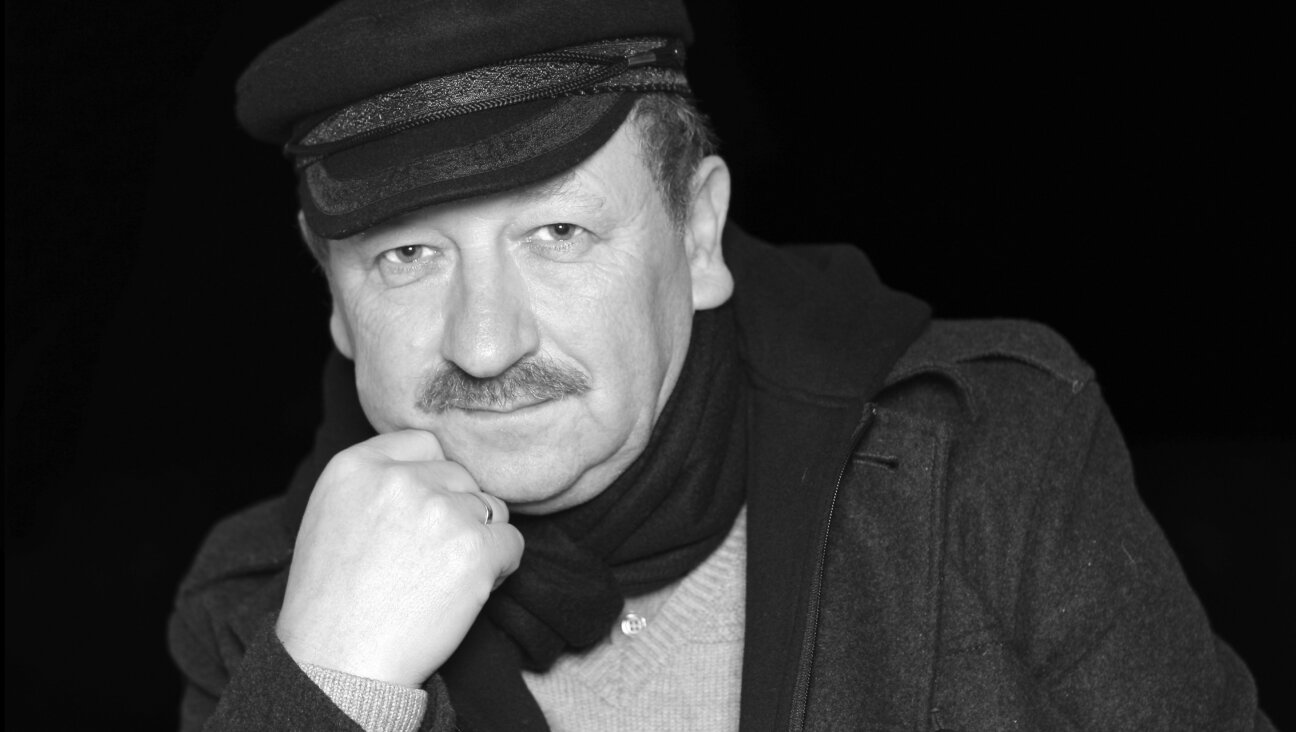
Yiddish קאָנצערט לכּבֿוד דעם ייִדישן שרײַבער און רעדאַקטאָר באָריס סאַנדלערConcert honoring Yiddish writer and editor Boris Sandler
דער בעל־שׂימחה האָט יאָרן לאַנג געדינט ווי דער רעדאַקטאָר פֿונעם ייִדישן פֿאָרווערטס.
-

Fast Forward Trump’s new pick for surgeon general blames the Nazis for pesticides on our food
-
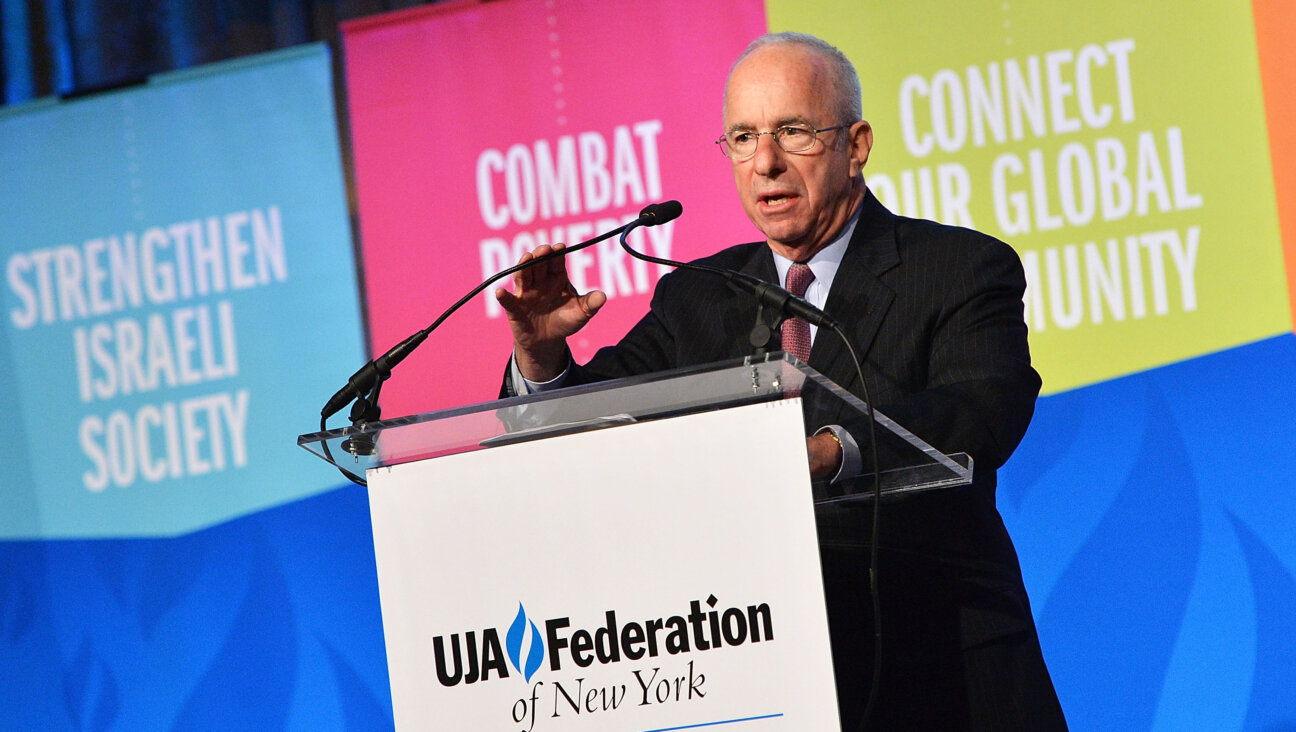
Fast Forward Jewish feud over Trump escalates with open letter in The New York Times
-
Shop the Forward Store
100% of profits support our journalism
Republish This Story
Please read before republishing
We’re happy to make this story available to republish for free, unless it originated with JTA, Haaretz or another publication (as indicated on the article) and as long as you follow our guidelines.
You must comply with the following:
- Credit the Forward
- Retain our pixel
- Preserve our canonical link in Google search
- Add a noindex tag in Google search
See our full guidelines for more information, and this guide for detail about canonical URLs.
To republish, copy the HTML by clicking on the yellow button to the right; it includes our tracking pixel, all paragraph styles and hyperlinks, the author byline and credit to the Forward. It does not include images; to avoid copyright violations, you must add them manually, following our guidelines. Please email us at [email protected], subject line “republish,” with any questions or to let us know what stories you’re picking up.







